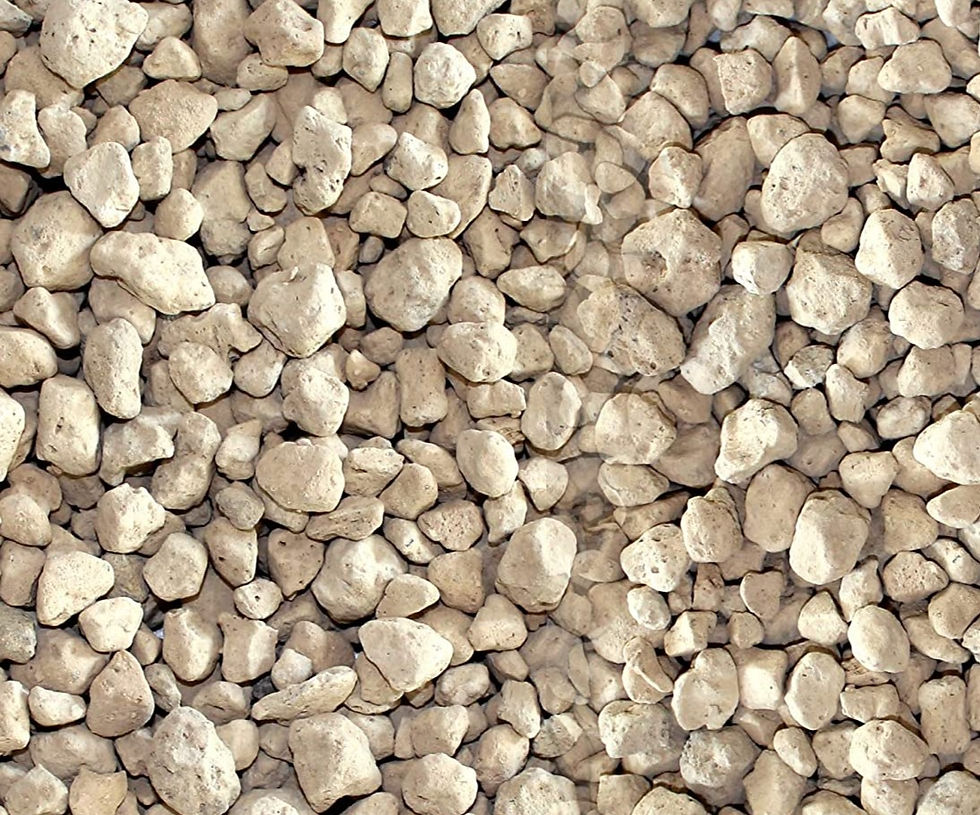

The substrate
On this page, I present the different composite substrates I use and the various ways in which they can be adapted. There are as many substrates as there are cactus collectors. Experience will help you find the one that works best for you. A substrate in a clay pot will dry out faster than in a plastic pot, just as a pot with a large volume will retain moisture and can be enriched with drainage elements.
A substrate that is more mineral-based and drains better than average is important for hardy cacti, as winter humidity is their number one enemy. After many years of using Hakaflor cactus potting soil, I decided to repot my entire collection in a 100% mineral substrate that I mixed myself. It contains pumice, volcanic rock, and zeolite.
Hakaflor cactus soil
This is the substrate I used for all my plants until 2024. It is very mineral-based (volcanic lava, clay, vermiculite, pumice, and pumice sand) but contains organic matter composed of coconut fiber. According to the experience of the Hadorns, owners of Hakaflor, a mineral substrate used on its own is not ideal. This substrate promotes excellent growth and healthy roots. If you don't want to make your own substrate, I recommend this one.
It can be purchased from Hakaflor in Sirnach and at the Lavaux Garden Center in 7.5L bags.







Lechuza Basicpon
This 100% mineral substrate is sold at Coop, Hornbach, and Obi. Its advantage is that it contains pumice, lava rock, and zeolite. It stores water while still allowing drainage.
I have used it for a few plants, but added 5 to 10% potting soil to provide organic matter. Be sure to choose the Basicpon type from the Lechuza range. This one does not contain any fertilizer.
Organic matter
Rich in nutrients, organic matter, also known as humus, is the result of the decomposition of plant matter. Compost provides the nutrients necessary for plant growth. It allows organisms and fungi (symbiotic mycorrhizal relationship) to grow, which is important for the health of plants and soil. I add worm humus to the substrate of my caudex plants because they need more nutrients than cacti.




The pumice stone
The pumice stone works wonders. Very light, it offers good aeration of the substrate and allows the roots to develop thanks to its water retention capacity. Pure pumice is ideal for cuttings too. The seedlings that I made in a homemade substrate of 50% pumice, 20% organic (compound) and 30% gravel gave me the best results in terms of growth and roots. It is available in different grain sizes. Choose an average.
Available from German suppliers like Uhlig or Kakteen Haage.
Volcanic rock or pozzolana
Volcanic rock, also called pozzolan, is interesting for its ability to retain water and humidity in a substrate. I use it for my Pterocactus as they like to have wet feet and for some Austrocactus growing in volcanic rock in the habitat.
You will find it in any garden center. There are different grain sizes. That of 8 to 16mm seems to me the most suitable.




Diatomaceous earth
I just added this substrate also called kieselgur to my mixture after a discussion with Michael Kiessling on his mixture. It is ideal for the cultivation of cacti and succulents as additives to the substrate. The insecticidal action of diatomaceous earth helps prevent the appearance of pests in the roots such as lice or scale insects.
The homemade mix
The homemade substrate is ultimately a mixture that you make according to your budget and what you have on hand.
Garden soil, vegetable garden soil, pumice, volcanic rock, concrete gravel, or even sand for children's sandboxes—anything can be mixed together.
My rule of thumb is to use at least 60-70% minerals and avoid sand proportions greater than 10-20% so that the substrate does not harden. The rest depends on your desires and needs. Since 2025, I have been using a new homemade mixture composed of fine and medium pumice, zeolite, and volcanic lapilli. The roots grow extremely well. Remember to add fertilizer several times a year.


